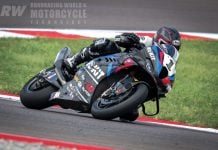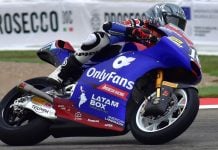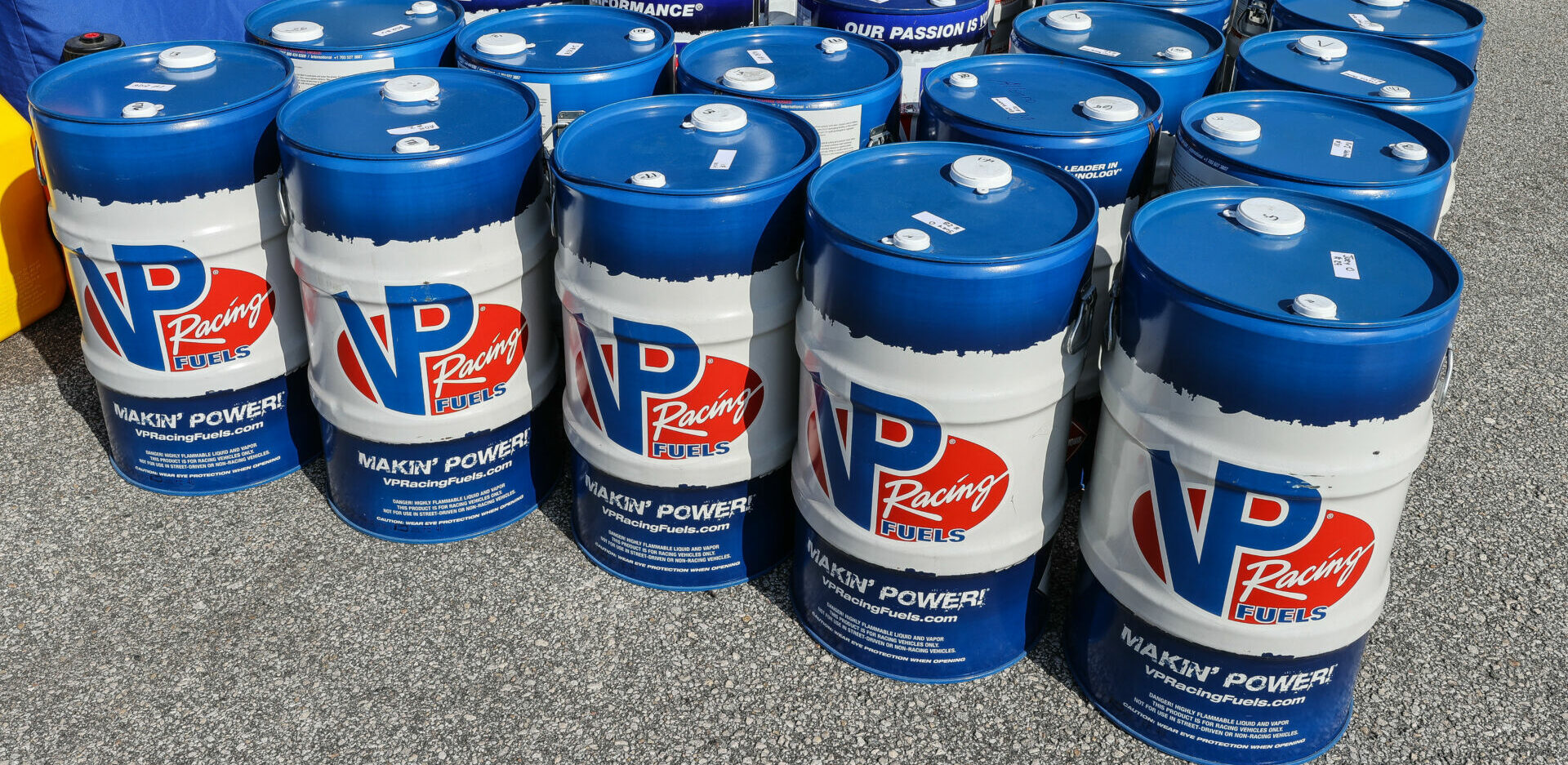FIRST PERSON/OPINION:
By David Swarts
On Wednesday afternoon PDT, MotoAmerica and Yamaha both issued press releases within the span of 10 minutes on the same topic.
MotoAmerica’s release announced that the fuel sample taken from Jake Gagne’s Fresh N Lean Progressive Yamaha following Superbike Race Two at Circuit of The Americas was found to be non-compliant with the mandatory and approved spec fuel, VP Racing Fuels MGP, and as a result Gagne was disqualified from his second-place finish in that race.
The Yamaha release included a comment from Team Manager/Team Owner Richard Stanboli, which quoted him as saying, “For Superbike Race 2 at COTA, we cleared the use of the 2022 fuel with the MotoAmerica Tech Director. In hindsight and knowing what we now know, we would not have used it.”
At a glance, the timing of these releases made it seem like it was a move coordinated between MotoAmerica and Yamaha. In reality, MotoAmerica did not see Yamaha’s statement before it was released and actually took exception to Stanboli’s comments.
Asked about Stanboli’s comments, MotoAmerica Chief Operating Officer Chuck Aksland said, “We obviously don’t agree with the way that that was phrased. [MotoAmerica Technical Director] Tige [Daane] was aware that Richard was going to run a 2022 drum [of MGP fuel at COTA], but that has no bearing on what was found in the fuel sample. It’s fine to run 2022 fuel. If somebody had a 2020 drum of fuel it would be fine to run it.
“It doesn’t make any difference. We’ve run the same basic [fuel] specification since 2019 and what was found in the sample taken from the fuel tank [of Gagne’s bike] was not compliant with the spec. It doesn’t matter which year.”
Roadracingworld.com then asked Aksland what specific, non-compliant component was found in the fuel samples taken from Gagne’s bike.
“I’m not going to comment on what was actually found in it,” said Aksland. “All I’m going to say is that it was not compliant with the MGP fuel specification.”
In the past, before the AMA Superbike Championship went to a spec fuel in about 2009, the heavily oxygenated fuels used by most teams added about five horsepower when poured into the tank of a 600cc Supersport bike but were very toxic, to the point where the fumes could make riders and mechanics feel sick. The fuels were also relatively expensive, typically $35 per gallon with some fuel companies offering $500 a gallon blends. But everybody who wanted to be competitive had to spend the money, because everybody else was using it.
Using a spec fuel, theoretically, makes racing safer and less expensive for teams and competitors. And a spec fuel is a limiter in terms of engine performance.
Over decades there have been engine tuners and crew chiefs who have sought to go the easy route to get more performance from their engine by secretly adding oxygenated fuel additives to spec fuels. One such additive is MTBE.
MTBE, or Methyl Tertiary-Butyl Ether, is a chemical compound manufactured by the reaction of methanol and isobutylene, according to the U.S. Environmental Protection Agency (EPA). It was produced in very large quantities in the not-so-distant past and used to replace lead as an octane-enhancing additive and oxygenate in automobile gasoline to help prevent the harmful effects of detonation or “knocking.” Its use was expanded in the 1990s when it was found to reduce pollution emissions from automobiles, according to the U.S. Environmental Protection Agency (EPA). MTBE accomplished this with its extra oxygen content.
MTBE is a little over 18% oxygen by mass, while a spec racing fuel like the 94-octane VP Racing Fuels MGP currently used by MotoAmerica has 2.56% oxygen by mass.
More oxygen in fuel also makes it possible to burn more fuel in the combustion chamber, which means a bigger bang, which means more energy pushing a piston, which means more engine performance.
The use of MTBE in automobile gasoline was phased out (and replaced by the use of ethanol) when it was discovered to be contaminating ground water from leaky underground fuel storage tanks, and was found to cause eye, skin, and airway irritation in high exposure situations. MTBE is also believed to be a cause of cancer, according to the U.S. Center for Disease Control and Prevention (CDC), but that link has not been proven as of post time.
But MTBE still exists and is still available (Grainger.com sells it for $1914.82 for four 1-gallon glass bottles) and it still adds oxygen to gasoline.
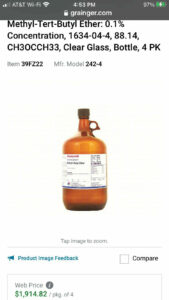
MTBE is a key ingredient in VP Import car racing fuel, with 15-20% MTBE content. VP T4 fuel uses a similar compound, with 35-40% ETBE content. VP U44 fuel is 35-45% MTBE.
Rumors circulating in the MotoAmerica paddock at New Jersey Motorsports Park two weeks after the COTA event promoted the idea that Gagne’s fuel samples included 20% MTBE. Without seeing the actual test report, that’s impossible to verify or refute. If that was true, it could produce a substantial performance advantage compared to bikes running the spec fuel without MTBE added.
So, what would deter an engine tuner from slipping MTBE into their fuel if they felt they needed to control detonation and/or wanted to advance ignition timing, to gain quick and easy performance?
To start with, fuel testing. MotoAmerica had not done any fuel testing after 2018, until fuel samples were taken from the top-three finishing bikes in Superbike Race Two at COTA. MTBE is detectable in gas chromatography (GC) testing, which is the “preferred fuel testing method,” of MotoAmerica and other racing sanctioning bodies. GC testing breaks a substance down into its core elements. (Detailed Hydrocarbon Analysis, or DHA, will also detect MTBE and ETBE, but is very expensive.)
For instance, a GC testing readout of VP Racing Fuels’ MGP would include: 20-26% Naphtha (CAS# 64741-66-8), 17-21% Toluene (CAS# 108-88-3), 14-18% 2-methylbut-2-ene (CAS# 513-35-9), 7-12% 2-methylbutane (CAS# 78-78-4), 5-9% Ligroine (CAS# 8032-32-4), 5-9% Cyclopentane (CAS #287-92-3), 4-6% Xylenes (CAS# 1330-20-7), 3-5% Ethanol (CAS# 64-17-5), 3-5% Mesitylene (CAS# 108-67-8), 1-4% Propan-2-ol (CAS# 67-63-0), and 1-3% Methanol (CAS# 67-56-1), according to the Safety Data Sheet for VP Racing Fuels’ MGP.
Each CAS number identifies each chemical component included; note that Methyl Tertiary-Butyl Ether (CAS# 1634-04-4) is not on that list.
But earlier this year, VP sent cans of an experimental, prototype 2024 spec fuel for MotoAmerica teams to test. The cans (see an example below) carried an interesting label…
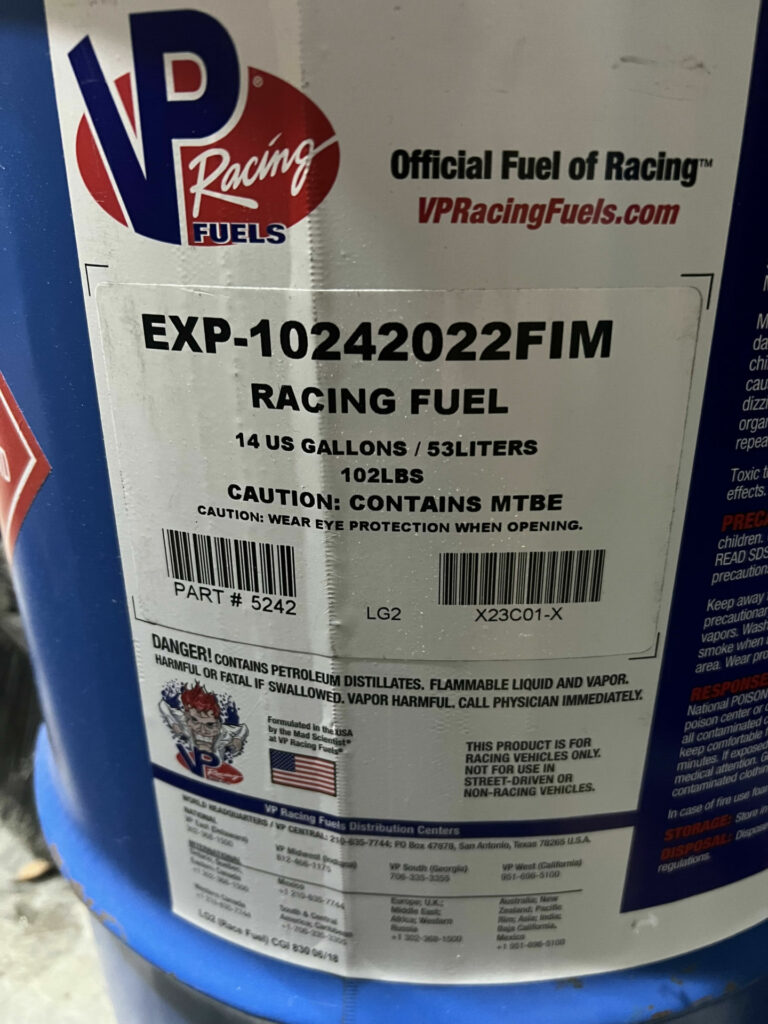
More:
Asked to comment on what made the fuel samples taken from Gagne’s bike illegal, Bruce Hendel of VP sent this text to Roadracingworld.com: “It’s not my place to comment on that. That info would need to come from MotoAmerica.”


